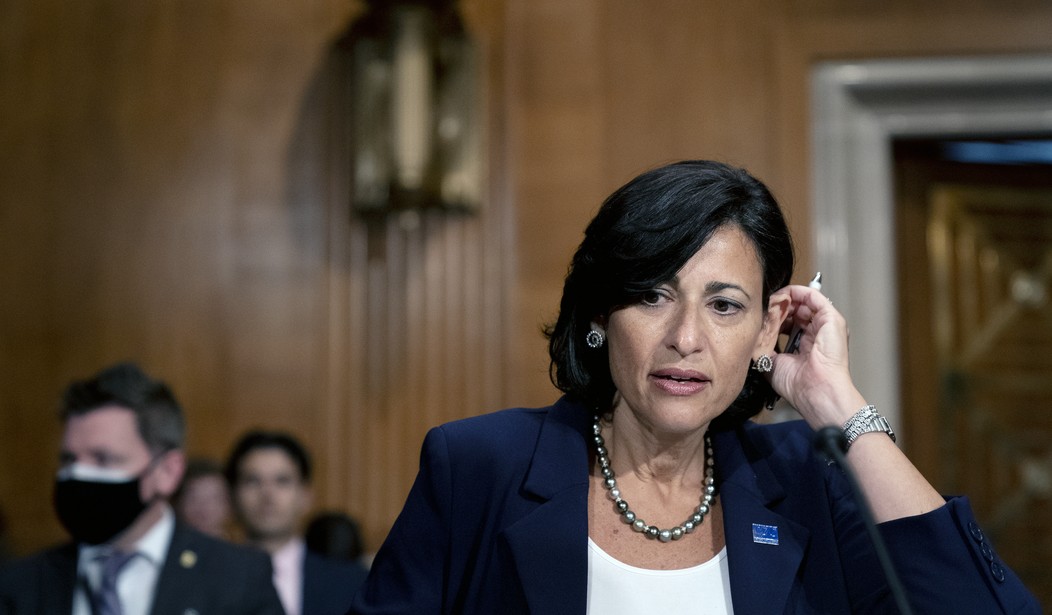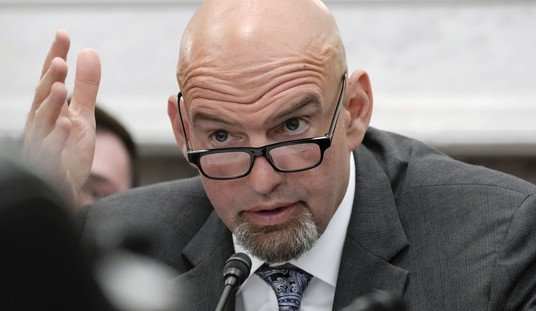This isn’t a leaked powerpoint of uncertain provenance. This is the genuine article, a CDC study of an outbreak several weeks ago in Provincetown, Massachusetts, that caused the agency to scramble and recommend masking for every American in a community with substantial transmission.
Having now read through it, I have the same reaction as Greg Pollowitz: “[W]hat the CDC data on Provincetown actually shows is that even under perfect conditions for a superspreader event, the vaccine works spectacularly well.”
The study tracks a nasty outbreak in P-town over the first two weeks of this month. On July 3, cases in Barnstable County were rock-bottom at zero per 100,000 residents due in large part to the state’s high vaccination rate of 70+ percent partially immunized and 60+ percent fully immunized. Two weeks later, after locals partied on July 4 and attended a series of summer events, cases had exploded to 177 per 100,000 over the previous 14 days. Many of those infections were afflicting fully vaccinated people.
That’s not good news. But is it as terrible as the reporting has cracked it up to be?
Approximately three quarters (346; 74%) of cases occurred in fully vaccinated persons (those who had completed a 2-dose course of mRNA vaccine [Pfizer-BioNTech or Moderna] or had received a single dose of Janssen [Johnson & Johnson] vaccine ≥14 days before exposure). Genomic sequencing of specimens from 133 patients identified the B.1.617.2 (Delta) variant of SARS-CoV-2, the virus that causes COVID-19, in 119 (89%) and the Delta AY.3 sublineage in one (1%). Overall, 274 (79%) vaccinated patients with breakthrough infection were symptomatic. Among five COVID-19 patients who were hospitalized, four were fully vaccinated; no deaths were reported. Real-time reverse transcription–polymerase chain reaction (RT-PCR) cycle threshold (Ct) values in specimens from 127 vaccinated persons with breakthrough cases were similar to those from 84 persons who were unvaccinated, not fully vaccinated, or whose vaccination status was unknown (median = 22.77 and 21.54, respectively).
The point about the “cycle threshold values” in the vaccinated and unvaccinated being similar is what drove the new masking guidance. The CDC deduced from that data that the viral load in vaxxed patients with breakthrough cases was just as large as the viral load in infected unvaxxed people.
We’ll come back to that. But look again at the numbers:
469 known cases
346 of them fully vaccinated
274 of those having symptoms
5 hospitalized (4 of them fully vaccinated)
0 deaths
Is it weird that there were more vaccinated people among the known cases than unvaccinated? Not really. Again, because Massachusetts has a very high vaccination rate, there are simply many more vaccinated people walking around than unvaccinated ones. (As a Twitter pal put it earlier today, if 100 percent of the population is vaccinated, then 100 percent of all cases will be vaccinated people.) And that might be especially true during mass gatherings indoors, like July 4 parties. Unvaccinated people tend to be risk-tolerant but they might shy away from environments which they have good reason to believe will be superspreader events. The vaccinated have (or had) no such incentive. They may have been overrepresented in Provincetown bars on July 4.
Which brings us to the first wrinkle in the data. How much of the P-town outbreak is due to the circumstances being absolutely ideal for a mass outbreak?
The thing you have to understand about Provincetown is, it’s so crowded. And the venues are these old (charming!) New England buildings. Low ceilings, weak HVAC, small floor plans. It gets humid inside. If you try to calculate R0 off this atypical situation…
— Josh Barro (@jbarro) July 30, 2021
Some important context from @sullydish on the extremely (un)favorable airborne spread conditions that existed in Provincetown over July 4. From this we have a grand total of five (5) hospitalizations… https://t.co/c8jhe5sYpB pic.twitter.com/Hez9GH2ZZz
— Josh Barro (@jbarro) July 30, 2021
Big crowds, small spaces, poor ventilation, hours of laughing and shouting among people whose inhibitions had been lowered by alcohol. Result: A hospitalization rate among the vaccinated of 1.2 percent and no deaths at all. And of the four vaxxed people hospitalized, two of them had underlying health conditions according to the CDC. Which means the hospitalization rate for “healthy” vaccinated people was 0.6 percent.
And the vast majority of the 133 people whose viral samples were sequenced, 89 percent, had the Delta variant. The best SARS-CoV-2 could do with its nastiest strain under near-laboratory conditions for a superspreader outbreak was … zero deaths in a heavily vaccinated population.
But there’s another wrinkle in the data. We know that there were 469 cases. But how many infections were there? That matters a lot for the denominators here.
*Symptomatic* breakthrough infections having similar viral loads to *symptomatic* unvaccinated infections would be much less of a problem, both because symptomatic breakthroughs are rare and because people can learn to be more careful (and get tested) when they have symptoms.
— Nate Silver (@NateSilver538) July 30, 2021
The sample the CDC used was (presumably) self-selecting, people volunteering to be tested because they had some reason to believe they were infected, i.e. they were experiencing symptoms. But what if in reality 5,000 vaccinated people were infected and 4,500 of them were asymptomatic? Using the CDC’s math, 79 percent of vaccinated people with a confirmed breakthrough infection had symptoms, a scary number. Under my hypothetical, that number would drop to 5.5 percent. The same point goes for the viral load data. The CDC found that viral loads in 127 symptomatic vaccinated people were similar to the loads in 84 symptomatic unvaccinated people. But what if there were another 4,500 infected vaccinated people whose viral loads were much lower? That would mean that breakthrough infections actually don’t make the vaxxed as infectious as the unvaxxed in the great majority of cases. Only in sympomatic breakthrough infections, perhaps, do the vaxxed pose a real threat to others.
Which would big news, like Silver says. If you’ve had your shots and you wake up one day with a fever and a dry cough, you can avoid infecting others by quarantining. If vaccinated people aren’t infecting others when they’re asymptomatic then Delta is much less of a threat than the CDC made it seem. And the study acknowledges that towards the end: “[A]symptomatic breakthrough infections might be underrepresented because of detection bias.” That’s kind of important.
There’s another problem. The total sample here in comparing viral loads is just 211 people. That’s tiny, Silver notes, which means there’s more room for error:

The big confidence intervals mean the unvaccinated might have a Ct value as high as 35 while the vaccinated have one around 12, which would place the viral load in the unvaxxed at three times what it is in the vaccinated. And Ct value isn’t a perfect barometer of viral load in the first place. The study calls it a “crude correlation to the amount of virus present in a sample” and says microbiological studies are needed to confirm it.
WaPo‘s story on the study goes on to say that “vaccinated people could spread the virus to each other” but that point actually isn’t borne out by the study either. It seems like a safe assumption that at least some of the vaccinated people in P-town who caught COVID in the bars caught it from vaccinated friends but there’s nothing in the data to confirm it. Conceivably, a bunch of unvaxxed superspreaders wreaked havoc on the vaccinated around them by infecting them en masse.
The bottom line is that the CDC rushed out the new guidance because they thought time is of the essence. If symptomatic vaccinated people are infecting those around them, Americans needed to know that ASAP. Otherwise vaxxed adult children might carry on as normal around their unvaxxed older parents, putting them at risk of a killer Delta infection. The question going forward will be why the CDC didn’t refine the guidance for that situation — the vaccinated needing to take precautions around unvaccinated vulnerable people, specifically — instead of telling everyone in a high-transmission community to mask up again.
I’ll leave you with this graph, which shows the rate of ICU hospitalizations in Provincetown’s Barnstable County. They’ve never been in the danger zone. In fact, ICU cases are trending down lately.









Join the conversation as a VIP Member